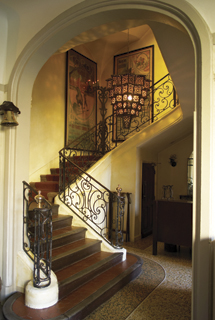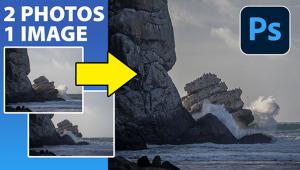The Ultra-Fast Advantage; Case In Point: Leica’s Summilux-M 21mm f/1.4 & 24mm f/1.4 Lenses
There are plenty of other good (but significantly slower) 21mm and 24/25mm lenses on the market, almost all cheaper, smaller, lighter, and exhibiting less distortion than the two under discussion here. The 2.2 percent maximum distortion for the Summilux 24mm and 2.3 percent for the 21mm are, as Leica’s instruction book says, “negligible for the majority of photographic applications,” but if you want virtually zero distortion, and you don’t mind the speed loss, the 21mm f/4.5 Zeiss Biogon is a better choice. Unfortunately it is 32⁄3 stops slower, or 1⁄10 of the speed.
 |
|
|
These are not lenses for everyone. You have to like the focal length(s); need the speed; be prepared to put up with the compromises that are necessary in order to get the speed (bulk, weight, distortion); and, of course, find $5995 for each of them, or $11,990 for the pair. Neither of us has ever spent the price of even one of these lenses on a car.
 |
|
|
There are however very good reasons to buy ultra-fast lenses. The first, and most compelling in our view, is for taking handheld pictures, possibly of moving subjects, in low light. The second, very much the present fashion, is selective focus.
 |
|
 |
|
|
Low Light
With today’s high-speed films, and even higher-speed digital sensors, ultra-fast lenses are less necessary than they used to be. Today, many people turn up their noses at having “only” ISO 2500 on the Leica M8 and M8.2. But that’s more than 15x the speed of the old High Speed Ektachrome (ASA 160—which was only available in 20-exposure rolls) or 3x to 4x the speed of “pushed” Kodak Tri-X or Ilford HP4. Sure, some people pushed further, but shadow detail soon became a fleeting memory. For comparison, a 21mm f/1.4 Summilux is 21⁄2 stops faster than a 21mm f/3.4 Super Angulon: about 6x.
To many, though, this means only one thing. With ultra-fast lenses and high-speed films or sensors, the frontiers of “available darkness” photography are pushed back even further. What is more, most people reckon they can hold a rangefinder camera steadier than a reflex, often for another step or even two steps on the shutter speed dial. No one is sure why, though it may be something to do with continuous viewing. Add to this the unobtrusiveness of a Leica: to most people, it just looks like a big
point-and-shoot. Suddenly you begin to see why Leicas retain a professional following to this day.
 |
|
|
There is also the point that lower film or sensor speeds normally translate straight into better image quality: more sharpness, and less noise or grain. If you have an f/1.4 lens on your camera, you can choose whether to go for (let us say) ISO 100 at f/1.4 or ISO 400 at f/2.8—though the latter will of course give you more depth of field, which brings us on to the second reason why people buy fast lenses: selective focus.
 |
|
|

















































